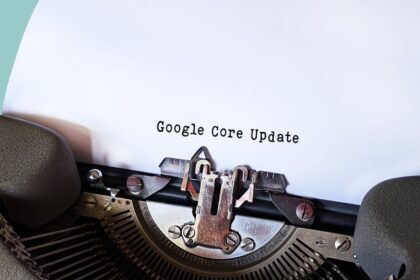User Experience (UX) and On-Page SEO, though often discussed as separate disciplines, are intrinsically linked and form a critical synergy for modern digital success. The evolution of search engine algorithms, particularly Google’s, has increasingly prioritized user satisfaction, effectively blurring the lines between what was traditionally considered “technical SEO” and “user-centric design.” Understanding this profound connection is no longer optional; it is fundamental to achieving high organic rankings, sustained website traffic, and meaningful conversions.
The bedrock of this connection lies in the shared ultimate goal: to provide the best possible experience for the end-user. On-Page SEO, at its core, involves optimizing individual web pages to rank higher and earn more relevant traffic in search engines. This includes optimizing content, HTML source code, and images. User Experience, on the other hand, encompasses every aspect of a user’s interaction with a website or application, focusing on usability, accessibility, and the overall feeling of satisfaction. When a user finds exactly what they are looking for quickly, consumes the content effortlessly, and navigates the site intuitively, both UX and SEO objectives are simultaneously met. Search engines interpret positive user signals as indicators of quality, rewarding websites that deliver superior experiences with higher visibility.
The Evolving Role of User Signals in SEO
Google’s sophisticated algorithms are designed to mimic human judgment regarding content quality and relevance. While traditional SEO focused heavily on keywords, backlinks, and technical crawlability, the contemporary landscape places significant weight on how users interact with a website after landing on it from a search result. These “user signals” provide invaluable feedback to search engines:
- Dwell Time (or Time on Page): This refers to the duration a user spends on a page before returning to the search results or navigating away. A longer dwell time generally indicates that the user found the content engaging, relevant, and valuable. Conversely, a very short dwell time (pogo-sticking) suggests dissatisfaction, prompting the user to quickly return to the SERP to find a better result.
- Bounce Rate: The percentage of visitors who navigate away from the site after viewing only one page. A high bounce rate can indicate several issues, such as irrelevant content, poor readability, slow loading times, or a confusing user interface. While a high bounce rate isn’t always negative (e.g., for a contact page), consistently high rates across informational pages are often a red flag for search engines.
- Click-Through Rate (CTR): The ratio of users who click on a specific link (in this case, a search result) to the number of total users who view a page, email, or advertisement. A higher organic CTR for a given keyword suggests that the title tag and meta description are compelling and accurately represent the content, drawing users away from competitor results. This directly correlates with how well the search snippet appeals to user intent.
- Pages Per Session: This metric indicates how many different pages a user visits during a single session on a website. A higher number often suggests that the site’s internal linking structure is effective, the content is well-organized, and users are finding related, valuable information that keeps them engaged within the site.
- Exit Rate: The percentage of visitors who leave a website from a specific page. While related to bounce rate, exit rate can provide insights into problematic pages where users frequently abandon their journey, even if they’ve visited multiple pages prior.
These user signals act as implicit ranking factors. Google and other search engines strive to present the most useful and satisfying results to their users. If a website consistently generates positive user signals, it implicitly tells the search engine that it’s delivering on user expectations, thereby increasing its perceived authority and relevance for specific queries. This feedback loop makes UX an indispensable component of any effective On-Page SEO strategy.
Content Quality and Readability: The Core of On-Page SEO and UX
High-quality, readable content is the cornerstone where On-Page SEO and UX converge most powerfully. Search engines prioritize content that is comprehensive, authoritative, and truly helpful to the user. From a UX perspective, this means content that is easy to digest, engaging, and provides clear value.
- Relevance and Comprehensiveness: For SEO, content must align perfectly with search intent. If a user searches for “best noise-cancelling headphones,” the content should thoroughly cover that topic, addressing various factors like sound quality, comfort, battery life, price points, and specific models. From a UX standpoint, this means providing all the information a user would expect or need without having to visit multiple other sites. Comprehensive content that answers all potential follow-up questions reduces bounce rate and increases dwell time.
- Accuracy and Authority: Misinformation or poorly researched content not only damages user trust but can also lead to lower rankings. E-A-T (Expertise, Authoritativeness, Trustworthiness) is a critical concept in Google’s Quality Rater Guidelines, directly linking content quality to user trust. For users, accurate, well-researched content establishes credibility and makes them more likely to return.
- Readability and Formatting: A page might have excellent content, but if it’s presented as a dense wall of text, users will quickly disengage.
- Short Paragraphs: Break up large blocks of text into smaller, digestible paragraphs (typically 2-4 sentences). This improves scannability, especially on mobile devices.
- Subheadings (H2, H3, H4): Use a logical hierarchy of headings to break down content into sections. H tags are vital for SEO as they help search engines understand the structure and topical relevance of your page. For UX, they act as signposts, allowing users to quickly skim and find the specific information they are seeking, improving navigation and comprehension.
- Bulleted and Numbered Lists: These are excellent for presenting information clearly and concisely, making complex topics easier to understand. Both users and search engine crawlers appreciate the structured data.
- Bold Text: Use bolding strategically to highlight key phrases, important definitions, or takeaways. This aids quick scanning and draws attention to critical information for the user, while also signaling important terms to search engines.
- Active Voice: Write in an active voice to make sentences clearer, more direct, and easier to understand.
- Simple Language: Avoid excessive jargon or overly complex sentence structures where simpler alternatives suffice. Aim for a Flesch-Kincaid readability score that matches your target audience’s comprehension level.
- White Space: Ample white space around text and images prevents visual clutter and improves the overall aesthetic appeal, making the page feel less overwhelming and more inviting to read.
- Visual Elements (Images, Videos, Infographics): Visuals are crucial for enhancing both UX and SEO.
- Relevance: Images and videos should be directly relevant to the surrounding content.
- Quality: High-resolution, professional-looking visuals enhance perceived quality.
- Optimization (SEO & UX):
- Alt Text: Provides a textual description of an image for visually impaired users (accessibility) and for search engines to understand the image’s content (SEO). It’s also displayed if the image fails to load.
- File Size: Large image files significantly slow down page load times, a major UX detriment and a critical negative SEO signal. Optimize images by compressing them without sacrificing quality.
- Descriptive Filenames: Use relevant, keyword-rich filenames (e.g.,
blue-noise-cancelling-headphones.jpginstead ofIMG_001.jpg). - Responsive Images: Ensure images scale correctly across different devices and screen sizes.
- Video Integration: Embed videos (from YouTube or hosted) to provide alternative content consumption methods and increase dwell time. Ensure they are optimized for quick loading and playability.
- Infographics: Present complex data or processes in an easy-to-understand visual format.
Page Speed and Core Web Vitals: A User-Centric Ranking Factor
Page speed has been a known ranking factor for years, but Google’s introduction of Core Web Vitals (CWV) in 2021 elevated its importance, directly linking performance metrics to user experience. CWV are a set of specific, real-world metrics that measure user experience for loading performance, interactivity, and visual stability.
- Largest Contentful Paint (LCP): Measures loading performance. It reports the render time of the largest image or text block visible within the viewport. A good LCP score (under 2.5 seconds) means users see the main content of your page quickly, reducing frustration and the likelihood of them abandoning the page prematurely. For SEO, a fast LCP directly contributes to a positive user signal.
- First Input Delay (FID): Measures interactivity. It quantifies the time from when a user first interacts with a page (e.g., clicks a button, taps a link) to the time when the browser is actually able to respond to that interaction. A low FID score (under 100 milliseconds) ensures the page feels responsive and interactive to the user, preventing perceived lag. From an SEO perspective, this indicates a smooth user journey.
- Cumulative Layout Shift (CLS): Measures visual stability. It quantifies the amount of unexpected layout shift of visual page content. A low CLS score (under 0.1) means that content on the page doesn’t suddenly jump around while the user is trying to read or interact with it. Unexpected shifts are incredibly frustrating for users, leading to misclicks and a poor experience. For SEO, a stable layout signals a well-engineered and user-friendly page.
Optimizing for Core Web Vitals (and overall Page Speed):
- Image Optimization: As mentioned earlier, compress images, use modern formats (WebP), and implement responsive images. Lazy loading images (loading them only when they enter the viewport) can significantly improve initial load times.
- Minify CSS, JavaScript, and HTML: Remove unnecessary characters (spaces, comments) from code files to reduce their size and speed up parsing.
- Leverage Browser Caching: Allow users’ browsers to store parts of your website, so subsequent visits load much faster.
- Utilize a Content Delivery Network (CDN): CDNs distribute your website’s content across multiple servers globally, serving content from the server closest to the user, reducing latency.
- Reduce Server Response Time: Optimize your server, database, and application code. Fast hosting is crucial.
- Eliminate Render-Blocking Resources: Ensure CSS and JavaScript that aren’t critical for the initial page render are loaded asynchronously or deferred.
- Optimize Critical Rendering Path: Prioritize the resources needed to render the above-the-fold content first.
Websites that perform well on Core Web Vitals are inherently providing a better user experience. Google explicitly uses CWV as a ranking signal, making their optimization a direct bridge between UX and On-Page SEO success.
Mobile-Friendliness and Responsive Design: Non-Negotiable for Both
With the majority of web traffic now coming from mobile devices, a mobile-first approach is no longer a luxury but a necessity. Google primarily uses the mobile version of a website for indexing and ranking (mobile-first indexing).
- Responsive Design: A website built with responsive design adapts its layout and content seamlessly to any screen size, from desktop monitors to tablets and smartphones. This ensures a consistent and optimal user experience across all devices. For SEO, this means Google can crawl and index a single version of your content, simplifying their process and avoiding issues with duplicate content.
- Touch Targets: On mobile, buttons and links must be large enough and spaced far enough apart to be easily tappable without accidentally hitting adjacent elements. Small touch targets lead to user frustration and can negatively impact task completion.
- Legible Font Sizes: Text must be large enough to read comfortably on smaller screens without needing to pinch-to-zoom.
- Viewport Configuration: Properly configuring the viewport ensures the page scales correctly to the device width.
- Avoid Pop-ups and Interstitials (especially on mobile): Aggressive pop-ups that obscure content on mobile devices are a significant UX annoyance and can lead to a Google penalty, particularly if they impede access to the main content.
- Fast Mobile Load Times: Mobile users are even less patient than desktop users. All the page speed optimizations apply with even greater urgency for mobile.
A mobile-friendly website delivers a superior UX, which translates directly into better SEO performance. Users stay longer, bounce less, and engage more, sending strong positive signals to search engines.
Site Navigation and Architecture: Guiding Users and Crawlers
The way a website is structured and how users navigate through it significantly impacts both usability and search engine crawlability. A logical, intuitive site architecture benefits both user experience and SEO.
- Intuitive Navigation Menus:
- Header Navigation: The primary navigation should be clear, consistent, and easy to find, typically at the top of the page. It should contain links to the most important sections of your site. For users, this is their roadmap. For SEO, these are important internal links that help distribute link equity and define site hierarchy.
- Footer Navigation: Often contains secondary links like privacy policy, terms of service, contact information, and sometimes links to main categories. Useful for users who scroll to the bottom and for internal linking.
- Sidebar Navigation: Used for contextual navigation within a category or for filters on e-commerce sites.
- Clarity and Consistency: Use clear, descriptive labels for menu items. Avoid jargon. Ensure the navigation remains consistent across all pages.
- Breadcrumbs: These navigational aids show users their current location within the website’s hierarchy (e.g., Home > Category > Subcategory > Current Page).
- UX Benefit: They provide a clear sense of orientation, help users understand the site structure, and offer an easy way to navigate back to higher-level categories without using the browser’s back button.
- SEO Benefit: Breadcrumbs provide additional internal links with descriptive anchor text, reinforce site structure for search engines, and can even appear in search results as rich snippets, improving CTR.
- HTML Sitemaps (for users) and XML Sitemaps (for bots):
- HTML Sitemap: A human-readable page listing all (or most) of the pages on a website, categorized. While less common than in the past, they can still be useful for very large or complex sites, especially for users who prefer a comprehensive overview.
- XML Sitemap: Essential for SEO. This file lists all the URLs on your site that you want search engines to crawl and index. It helps search engines discover all your important content, especially new pages or pages that might not be easily found through internal links alone.
- Logical Content Hierarchy: Organize content from broad categories to specific subcategories. This hierarchical structure (e.g., /category/subcategory/product-page) makes it easy for users to drill down to specific information and for search engines to understand the relationship between different pages. A well-planned hierarchy supports topical authority.
- Flat Architecture vs. Deep Architecture: Generally, a flatter architecture (fewer clicks from the homepage to any given page) is preferred for both UX (quicker access) and SEO (easier crawlability and link equity distribution). However, excessively flat architectures can become unwieldy for very large sites. The key is a balance that feels intuitive to the user and efficient for crawlers.
- Search Functionality: For sites with a lot of content, a prominent and effective search bar is crucial for UX. Users who know exactly what they’re looking for will often go straight to the search bar. While not a direct ranking factor, internal search data can provide valuable insights into user intent and content gaps, which can then inform your SEO strategy.
Internal Linking: Enhancing User Flow and Link Equity
Internal links are hyperlinks that point to other pages within the same website. They are fundamental for both On-Page SEO and UX.
- User Journey Enhancement: Well-placed internal links guide users through your content, helping them discover related articles, products, or services. This keeps users on your site longer, increases pages per session, and improves overall engagement. For example, in an article about “smartphone cameras,” linking to another article on “mobile photography tips” provides relevant next steps for an interested user.
- Distributing Link Equity (PageRank Flow): Internal links pass “link equity” (or “link juice”) from stronger pages to weaker or newer pages. This helps boost the ranking potential of the linked pages. The homepage, often the strongest page on a site due to external backlinks, can distribute its authority throughout the site via internal links.
- Anchor Text and Relevance: The clickable text of an internal link (anchor text) is important for both users and search engines. For users, descriptive anchor text tells them exactly what they can expect on the linked page. For SEO, keyword-rich and relevant anchor text helps search engines understand the topic of the linked page and can contribute to its ranking for those keywords. Avoid generic anchor text like “click here.”
- Contextual Linking: Integrate internal links naturally within the body of your content. This makes them highly relevant to the surrounding text and more likely to be clicked by an engaged user.
- Orphan Pages: Avoid “orphan pages” – pages on your site that are not linked to from any other page. These pages are difficult for users to find and difficult for search engines to discover and crawl, essentially making them invisible. A robust internal linking strategy ensures all important pages are discoverable.
- Number of Internal Links: While there’s no magic number, ensure you have enough internal links to facilitate user navigation and crawlability without making the page appear spammy or overwhelming. Prioritize quality and relevance over quantity.
Meta Descriptions and Title Tags: The First Impression in SERP
While not directly on the “page” itself in terms of visible content, the meta description and title tag are critical On-Page SEO elements that significantly influence user experience at the search results level. They are your website’s storefront in the SERP.
- Title Tag (
): - SEO: The most important on-page ranking factor. It should include your primary target keyword, ideally near the beginning. It also helps search engines understand the main topic of the page.
- UX: It is the primary heading users see in search results and in their browser tab. It must be compelling, accurate, and clearly convey what the page is about. A well-crafted title encourages clicks. If the title is vague or misleading, users will skip it, resulting in a low CTR even if you rank well. Ensure it’s concise, ideally under 60 characters to avoid truncation.
- Meta Description ():
- SEO: While not a direct ranking factor, a compelling meta description significantly influences CTR, which is an indirect ranking factor. It’s an opportunity to provide a brief, persuasive summary of your page’s content.
- UX: This is the snippet of text that appears under your title tag in search results. It acts as an advertisement for your page. It should be informative, include relevant keywords (which Google may bold), and feature a clear call to action (e.g., “Learn more,” “Shop now,” “Get a quote”). A strong meta description manages user expectations and entices them to click. Ensure it’s approximately 150-160 characters to avoid truncation.
Crafting these elements requires a balance: include necessary keywords for search engine understanding, but primarily focus on making them enticing and informative for the human user. A high CTR from the SERP tells Google that your page is highly relevant and appealing for a given query.
URL Structure: Clarity for Users and Search Engines
A well-structured URL is both user-friendly and SEO-friendly.
- Readability and Semantics: URLs should be descriptive and easy for humans to read and understand. They should reflect the content of the page and follow a logical hierarchy. For example,
www.example.com/blog/seo-tips/on-page-ux-connectionis far more user-friendly and informative thanwww.example.com/p?id=12345. This readability aids users in understanding where they are on a site and what a page is about before they even click. - Keyword Inclusion: Incorporating relevant keywords in your URLs can provide a minor SEO boost and further signal the page’s topic to search engines. However, avoid keyword stuffing.
- Conciseness: Keep URLs as short as possible while remaining descriptive. Long, convoluted URLs are harder to share, remember, and process.
- Hyphens for Separation: Use hyphens to separate words in URLs (
on-page-seoinstead ofonpageseooron_page_seo). This makes them more readable for both humans and search engines. - Static vs. Dynamic URLs: Prefer static, clean URLs over dynamic URLs with many parameters (
?,&, etc.). Dynamic URLs can sometimes cause crawlability issues and are much less user-friendly. - HTTPS: While not strictly part of URL “structure,” using HTTPS (secure protocol) is now standard. It indicates a secure connection to users (via a padlock icon in the browser) and is a minor ranking factor for Google.
A clean, logical URL structure contributes to a seamless user experience and assists search engines in understanding and indexing your content effectively.
Schema Markup and Rich Snippets: Enhancing SERP Presentation
Schema markup (or structured data) is a vocabulary of tags that you can add to your HTML to improve the way search engines read and interpret your content. While it doesn’t directly affect rankings, it significantly impacts how your content appears in search results, often leading to “rich snippets.” This is where the UX and SEO benefits are profound.
- UX Benefit (Rich Snippets): Rich snippets present more detailed and visually appealing information directly in the search results. This extra context helps users quickly assess if your page is relevant to their query, increasing the likelihood of a click. Examples include:
- Review Stars: For products or local businesses, displaying average star ratings can build trust and attract clicks.
- Recipe Information: Showcases cooking time, ingredients, and review ratings directly in the SERP.
- Event Details: Displays dates, times, and locations for upcoming events.
- FAQ Snippets: Shows common questions and their answers directly in the search results, providing immediate value.
- Product Information: Displays price, availability, and review ratings for e-commerce products.
- SEO Benefit: While structured data isn’t a direct ranking factor, its impact on CTR is an indirect SEO benefit. By making your listing more prominent and informative, you naturally attract more qualified clicks. This higher CTR signals to Google that your result is highly relevant and valuable to users, potentially leading to improved rankings over time. Additionally, structured data helps search engines better understand the context of your content, contributing to a more accurate representation of your page in the knowledge graph and potentially qualifying for featured snippets.
Implementing relevant schema markup (e.g., Article, Product, Review, FAQPage, LocalBusiness, Organization) is an advanced On-Page SEO technique that directly enhances the user’s journey from the search result page.
Accessibility: Broadening Reach and Enhancing Inclusivity
Web accessibility refers to the practice of designing and developing websites so that people with disabilities can perceive, understand, navigate, and interact with the web. This includes people with visual, auditory, physical, speech, cognitive, and neurological disabilities. Accessibility is a moral imperative and a legal requirement in many regions, but it also has clear benefits for both UX and SEO.
- Broader Audience Reach (UX): By making your website accessible, you open it up to a much larger segment of the population, including those who rely on assistive technologies (screen readers, voice control, magnifiers). This significantly enhances your overall user experience and ensures inclusivity.
- Improved Usability for Everyone (UX): Many accessibility features benefit all users, not just those with disabilities. For example, clear navigation, logical headings, and proper contrast ratios make a website easier to use for everyone, including those with temporary impairments (e.g., bright sunlight on a phone screen) or simply those who prefer a streamlined experience.
- SEO Benefits: While Google doesn’t have an “accessibility ranking factor,” many accessibility best practices align directly with good SEO practices:
- Alt Text for Images: As mentioned, critical for screen readers and search engine understanding.
- Semantic HTML: Using proper HTML tags (e.g.,
,,) rather than generictags helps assistive technologies and search engines understand the structure and purpose of different parts of a page.- Keyboard Navigation: Ensuring all interactive elements are reachable and operable via keyboard alone is crucial for users who cannot use a mouse. This also helps search engine bots traverse links.
- Descriptive Link Text: Using clear, descriptive anchor text for links (e.g., "Read our privacy policy" instead of "Click here") helps screen reader users and improves SEO relevance.
- Proper Color Contrast: Ensures text is readable against its background, which is a design choice that impacts user comfort and accessibility.
- Transcripts and Captions for Media: Providing text alternatives for audio and video content makes it accessible to those with hearing impairments and provides search engines with more crawlable content.
- ARIA Attributes: Accessible Rich Internet Applications (ARIA) attributes can be used to add semantic meaning to dynamic content or user interface components that aren't inherently semantic HTML (e.g., custom sliders, tabs). While ARIA isn't directly crawled, well-implemented ARIA improves the user experience for assistive technologies, signaling a high-quality site.
Ultimately, Google's goal is to provide the best results to all users. An accessible website is a more usable website, and usability is increasingly a signal of quality that Google aims to reward.
Error Handling: 404 Pages and Redirects
Even well-maintained websites can have broken links or pages that no longer exist. How a website handles these errors is a crucial part of user experience and has significant SEO implications.
- Custom 404 Pages (UX): Instead of a generic browser error, provide a custom 404 "Page Not Found" page. This page should:
- Be polite and clearly state that the page cannot be found.
- Maintain the website's branding and navigation.
- Offer helpful suggestions, such as a search bar, links to popular content, or a link back to the homepage.
- This mitigates user frustration and encourages them to stay on your site.
- Redirects (SEO & UX): When a page's URL changes or a page is permanently removed, implement proper redirects.
- 301 Redirects (Permanent): The most common and important redirect for SEO. A 301 redirect signals to search engines that a page has permanently moved to a new URL, passing almost all of the link equity (PageRank) from the old URL to the new one. For users, it seamlessly takes them to the new location without encountering an error.
- 302 Redirects (Temporary): Indicates a temporary move. Use sparingly for SEO purposes as it passes less link equity.
- Avoiding Broken Links: Regularly auditing your site for broken internal and external links is critical for both UX (users don't encounter dead ends) and SEO (search engines don't waste crawl budget on broken links and don't see a sign of neglect).
Proper error handling demonstrates attention to detail and a commitment to providing a smooth user experience, which is implicitly valued by search engines.
Measuring UX for SEO Benefit
To truly leverage the UX-SEO connection, it's essential to measure and analyze user behavior. Several tools and metrics can help uncover insights:
- Google Analytics (GA4):
- Engagement Rate: GA4's primary metric for user engagement, replacing bounce rate in many contexts. It measures the percentage of sessions that were "engaged sessions" (lasting longer than 10 seconds, having a conversion event, or having 2+ page views). Higher engagement indicates better UX.
- Average Engagement Time: Measures the average duration an engaged user spent on your website or app.
- Page Views/Screen Views: Indicates how many pages users visit per session.
- Conversion Rate: The ultimate measure of success for many websites. If users are finding what they need and converting (e.g., purchasing, signing up), it signifies a strong UX.
- Flow Reports: Visualize the paths users take through your site, identifying popular routes and common drop-off points.
- Google Search Console (GSC):
- Core Web Vitals Report: Provides real-world performance data for your pages, highlighting issues with LCP, FID, and CLS across your site. Directly informs technical UX improvements.
- Mobile Usability Report: Identifies specific issues that make your site difficult to use on mobile devices.
- Performance Report: Shows your average CTR, total impressions, and average position for different queries, allowing you to see if your SERP presence is appealing to users.
- Heatmaps and Session Recordings (e.g., Hotjar, Crazy Egg, Microsoft Clarity):
- Heatmaps: Visually represent where users click, scroll, and move their mouse on a page. This helps identify areas of interest, frustration (e.g., "rage clicks"), or neglect, informing content placement and design changes.
- Session Recordings: Play back actual user sessions, showing exactly how individual users interact with your site. This is invaluable for identifying usability issues, confusing navigation paths, or elements that users struggle with.
- User Testing and Surveys:
- Usability Testing: Involves observing real users as they attempt to complete specific tasks on your website. Their feedback and struggles provide direct insights into UX problems.
- On-Site Surveys/Polls: Ask users direct questions about their experience, satisfaction, or challenges they encountered. This quantitative and qualitative feedback is critical for understanding user sentiment.
- A/B Testing:
- Test different versions of a page element (e.g., headline, button color, content layout) to see which performs better in terms of user engagement metrics (CTR, conversion rate, time on page). This data-driven approach allows for continuous UX optimization that directly impacts SEO.
By regularly monitoring these metrics and conducting user research, you can identify areas for improvement that will not only enhance your users' experience but also send positive signals to search engines, leading to improved rankings and organic traffic.
Strategies for Integrating UX and On-Page SEO
Successfully merging UX and On-Page SEO requires a holistic and collaborative approach. It's not about choosing one over the other, but recognizing their symbiotic relationship and building strategies that serve both.
- Audience Research as the Foundation:
- Deep Dive into User Intent: Before creating any content, thoroughly understand what users are searching for and why. What questions do they have? What problems are they trying to solve? Tools like Google Search Console, keyword research tools (e.g., Ahrefs, Semrush), and forums can help.
- Persona Development: Create detailed profiles of your target audience, including their demographics, motivations, pain points, and digital habits. This informs both content strategy and design choices.
- Content Format Preference: Do your users prefer long-form articles, quick answer snippets, videos, or interactive tools? Tailor your content to their preferred consumption methods.
- Keyword Research with a UX Lens:
- Beyond just search volume, analyze keywords for the underlying user intent (informational, navigational, commercial, transactional).
- Use long-tail keywords to target highly specific user needs and questions, as these often have clearer intent and less competition.
- Consider related questions and "People Also Ask" sections in Google to ensure your content is comprehensive and answers all potential user queries.
- Content Audits with Dual Objectives:
- Regularly review existing content for both SEO performance (rankings, traffic) and UX quality.
- For UX: Is it still accurate? Is it readable? Is it engaging? Does it address user intent fully? Are there dead ends for the user?
- For SEO: Is it optimized for target keywords? Are internal links appropriate? Is the content comprehensive enough to outrank competitors? Does it meet E-A-T standards?
- Identify content gaps where new, user-centric content could be created.
- Technical SEO Audits with UX in Mind:
- Regularly scan for and fix technical issues that harm both crawlability and user experience:
- Page speed issues (Core Web Vitals).
- Mobile-friendliness problems.
- Broken links and redirect chains.
- Crawl errors and indexation problems.
- Lack of HTTPS.
- Poor sitemap and robots.txt configurations.
- These technical elements are the foundation upon which a good UX is built.
- Regularly scan for and fix technical issues that harm both crawlability and user experience:
- Prioritize User Flow and Task Completion:
- Map out user journeys for key tasks (e.g., purchasing a product, signing up for a newsletter, finding contact information).
- Optimize each step of these journeys to be as seamless and intuitive as possible. Remove unnecessary steps, clarify instructions, and minimize friction. A smooth user flow benefits conversions, which Google indirectly values as a sign of high-quality content.
- A/B Testing and Iterative Optimization:
- Continuously test hypotheses about what improves user experience and, consequently, SEO. This could involve testing different calls to action, page layouts, content formats, or even minor design tweaks.
- The web is dynamic, and user expectations evolve. Adopting an iterative approach to design and optimization ensures your website remains competitive and user-friendly.
- Cross-Functional Collaboration:
- Break down silos between SEO teams, UX designers, content creators, and web developers.
- SEOs provide keyword research, competitive analysis, and technical requirements.
- UX designers translate these insights into intuitive user interfaces, navigation flows, and engaging layouts.
- Content creators produce high-quality, relevant, and readable content that satisfies user intent.
- Developers implement the technical infrastructure, optimize for speed, and ensure code quality and accessibility.
- Regular communication and shared goals are essential for creating a website that excels in both user experience and search performance. For instance, when planning new content, the SEO team can advise on target keywords and search intent, while the UX team can recommend the best structure and interactive elements to satisfy that intent. This collaborative synergy ensures that every page element is optimized for both human visitors and search engine crawlers simultaneously.
By understanding that On-Page SEO is no longer just about keywords and meta tags, but about creating an inherently positive and efficient experience for the user, digital marketers can unlock sustained organic growth and build loyal audiences. The ultimate search engine algorithm is, and always will be, the human user.











